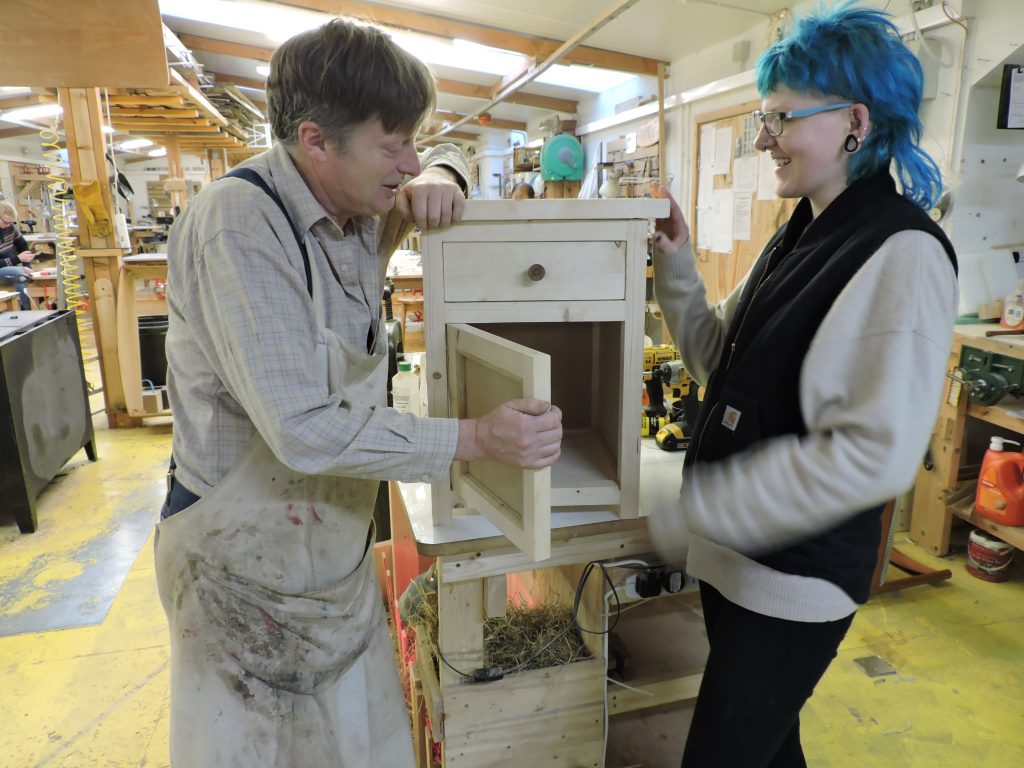Each year, the Chippendale school looks closely at the curriculum to see where we can improve the teaching and learning experience.
We’re always aware that, almost uniquely, our immersive course is only nine months long – and we have to equip our students with every professional woodworking skill in that period.
Every year is therefore a challenge but, rather than simply redoing what we’ve always done, the Chippendale school is always looking to innovate – to do things differently, or to bring in new specialist tutors from overseas.
When learning new skills it’s important to walk before you run, so this year we’ve tweaked the initial few weeks to give our students a project that will introduce them to the fundamentals of cabinet making, while at the same time establishing a high level of competence and safety on all the machinery in the workshop.
Their project is to individually complete a bedside cabinet before the Christmas break.
It may seem like an unusual task, but a bedside cabinet is the perfect way to teach the rudiments of making drawers and doors, and set within a relatively small piece of furniture.
It therefore gives students a chance to learn some basic skills and apply them together in a project that will stand them in good stead later.
Because, the fact is that most woodworkers will continue to make things like drawers and cabinet doors the same way as they were first taught – so our small innovation makes a lot of sense.
It will serve as a point of reference for students to look back on when they start to design their first pieces of furniture.
It will also give our students a huge confidence boost – to have only been here for a few weeks, and to have made their first piece of furniture.
With that added confidence, coupled with some basic skills, they can then go on to dream up the impossible, and make it happen!
But there’s one thing we’re not incorporating into our bedside design. The original bedside cabinet, in an age before flushing toilets, was designed to also accommodate a chamber pot.
Some aspects of design can safely be left in the past!
Anselm Fraser, principal
